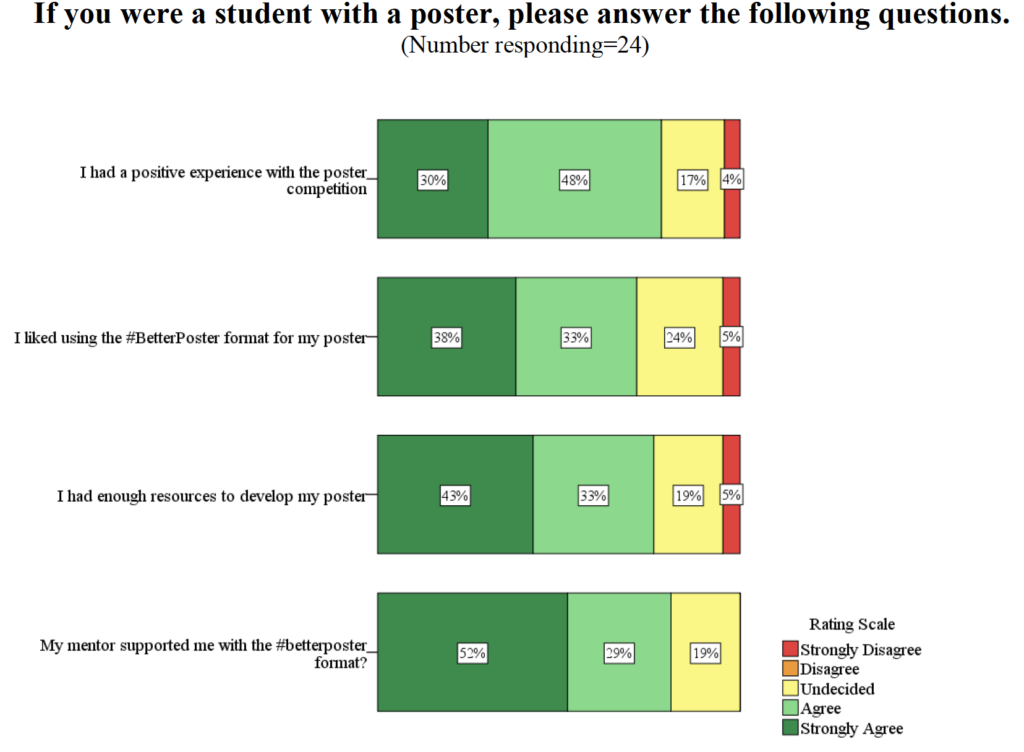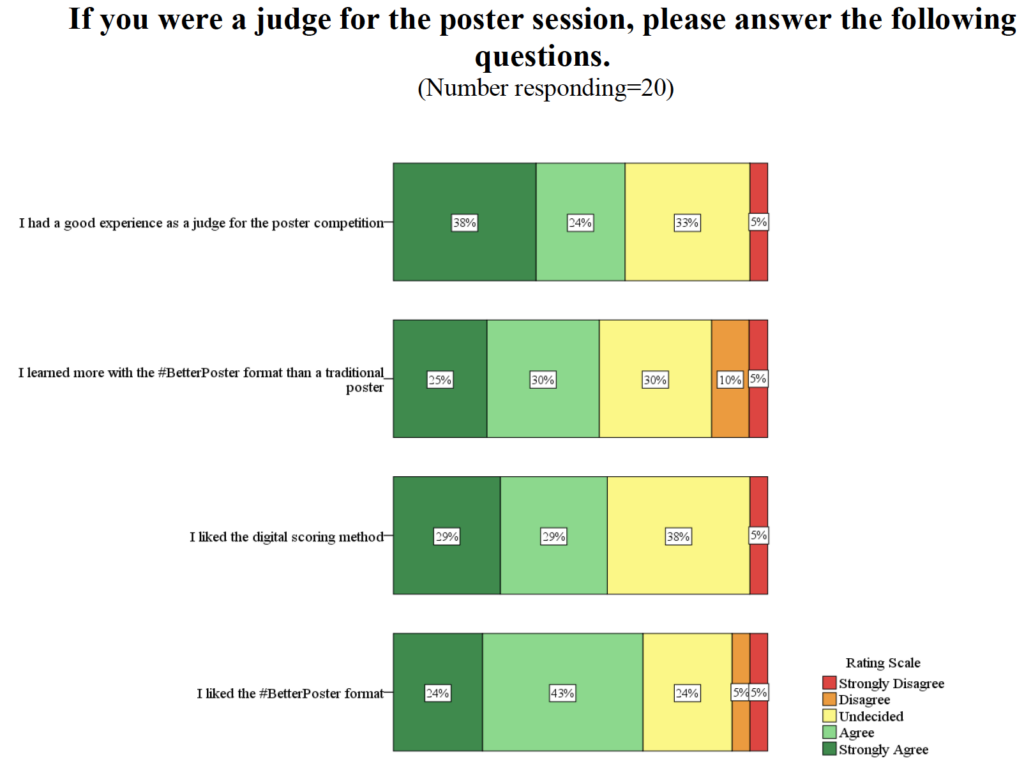Better Posters
DART encourages participating students to adopt #BetterPoster principles for poster presentations. We will update this page with experience in our Better Poster journey over the course of the project.
2022
For the 2022 DART Annual Conference & Poster Competition, we gave the whole poster competition process a makeover. While organizing the event, we realized that the traditional poster judging rubrics were not applicable to Better Posters, so we revamped the questions on the rubric.
The main point of the Better Poster methodology is to enable a viewer to understand the project’s main finding in a short time, without a presenter. We restructured the competition so that the presenters would set up their posters and leave the room. Each poster was assigned a number, and the number and QR code that linked to the online scoring form were attached by the organizers. When the competition began, the judges had approximately thirty minutes in a closed session to view the posters they had been assigned, without any presenters. After each judge had completed the first section of the scoring form for their assigned posters, the presenters were invited in and the oral discussions began. Presenters were instructed that the oral discussion component is their opportunity to showcase the depth of their understanding on the topic and reinforce two main points of science communication: what happened (or what they did), and why we (the larger scientific community or society) should care. The presenters were also instructed not to use the oral discussion to verbally present a prepared ‘speech’ with all the content they would have included on a traditional poster.
The templates and examples we developed are included here:
Presenters were given the following guidelines:
- Use the templates and examples provided to create your DART #BetterPoster
- Choose the layout you like the best and that best suits your work
- Print your poster to size 36” x 48” (if you need to print on 30” x 40”, be sure to adjust the template using Page Setup and check your poster for any weird scaling before printing).
- Get creative, make good use of color, font, and images.
- Avoid scientific jargon. Use this tool to help simplify your text
- For inspiration, please refer to this video, this video, or look at examples on Twitter with tags #BetterPoster
Judges were given these instructions:
- When you first arrive at the poster, scan the QR code to access the online scoring form.
- Enter your initials in the first text field, then find the poster from the drop-down list using the poster number and presenter name.
- Spend a few minutes viewing the poster and answer the first three questions on the form before the presenter arrives.
- When the presenter arrives, proceed with the oral discussion and answer the remaining questions on the form.
The post-event survey included questions for both presenters and judges that participated in the competition. Below are some results from the survey.

